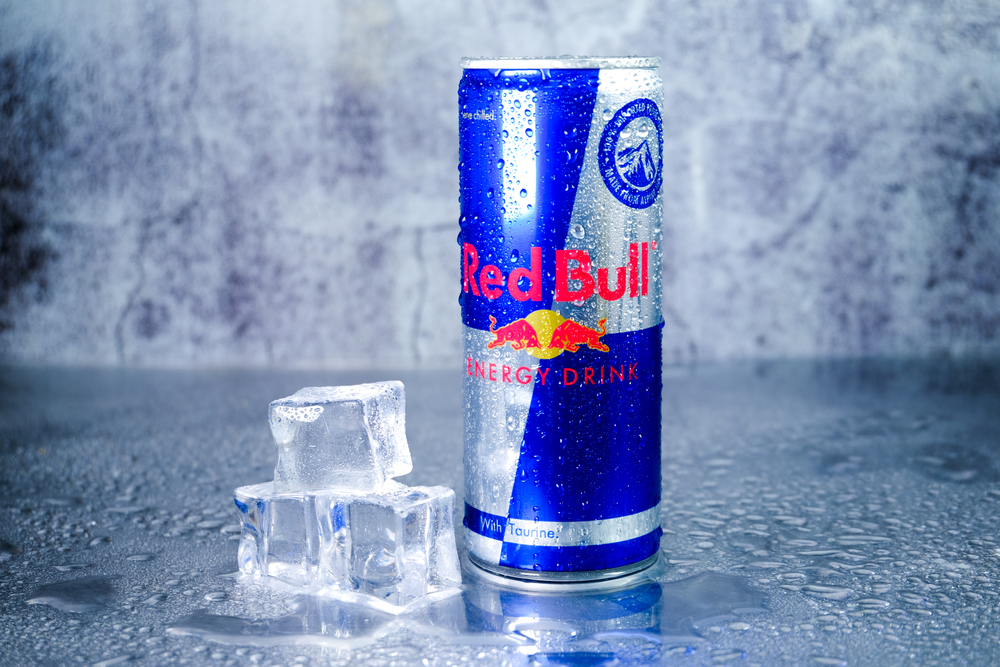As someone who loves pizza, frozen pizza is a convenient and delicious option when I don’t have the time or energy to make my own.
But how long can I keep that frozen pizza in the freezer before it goes bad? The answer is not as straightforward as you might think.

Understanding frozen pizza and its storage guidelines is crucial to ensure that it stays fresh and safe to eat.
The shelf life of frozen pizza varies depending on factors such as the brand, storage conditions, and whether it has been opened or not.
It is also important to know how to identify spoiled frozen pizza and the effects of improper storage. In this article, I will explore all of these topics and more to help you make the most out of your frozen pizza.
Key Takeaways
- Proper storage and handling of frozen pizza can extend its shelf life.
- It is important to know how to identify spoiled frozen pizza and the effects of improper storage to avoid foodborne illnesses.
- While fresh pizza may be the ideal option, frozen pizza can be a convenient and delicious alternative when stored and cooked properly.
Understanding Frozen Pizza
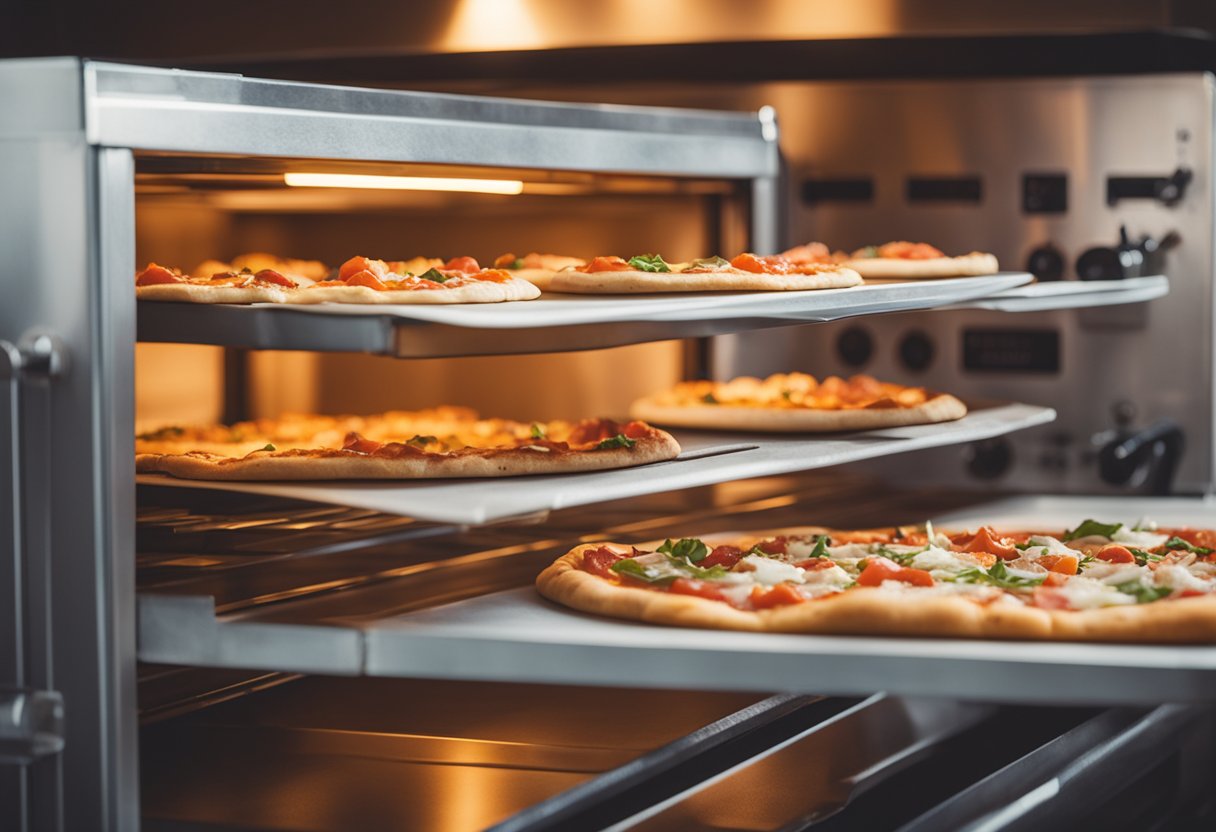
As someone who enjoys pizza, I have often wondered about the shelf life of frozen pizza. Frozen pizza is a convenient option for those who don’t have time to make homemade pizza or who want to enjoy a quick meal.
However, it is important to understand how long frozen pizza lasts and how it affects its taste and quality.
When it comes to frozen pizza, the type of pizza, storage conditions, and expiration date can all affect its shelf life.
Store-bought frozen pizza usually contains preservatives that extend its shelf life, whereas homemade pizza may not last as long.
Uncooked frozen pizza can last for up to 12 months in the freezer, but it is important to check the expiration date before consuming it.
The longer a pizza is frozen, the more its quality will change. The toppings, cheese, and tomato sauce can all affect the flavor of the pizza.
It is also important to note that the taste of frozen pizza can be affected by storage conditions. If the pizza is not stored properly, it can become bland or lose its flavor.
It is recommended to store frozen pizza in the freezer at all times to maintain its quality.
In summary, understanding the factors that affect the shelf life of frozen pizza can help ensure that you enjoy a delicious and safe meal.
Whether it is store-bought or homemade, it is important to check the expiration date and store it properly to maintain its flavor and quality.
Frozen Pizza Storage Guidelines
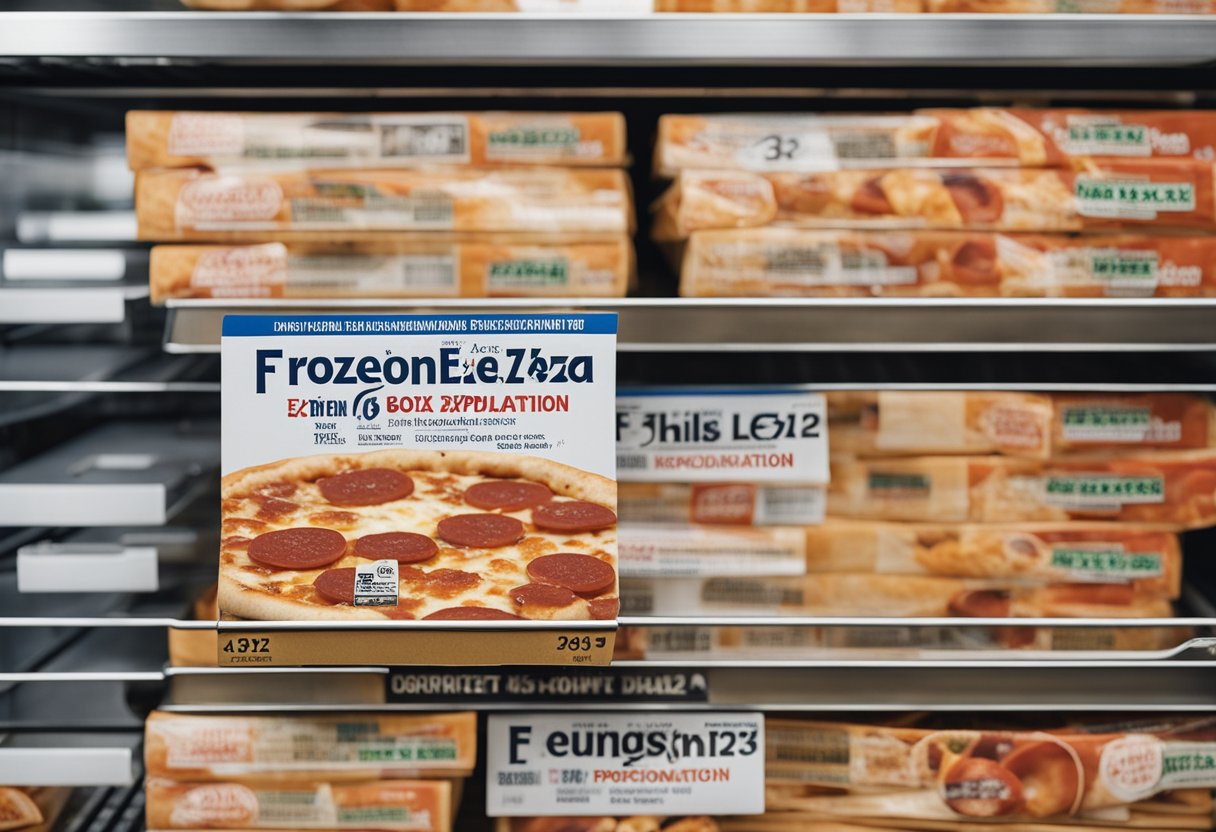
When it comes to storing frozen pizza, there are a few guidelines you should follow to ensure that it remains safe to eat and maintains its quality:
Store in a Freezer-Safe Airtight Container
It’s important to store your frozen pizza in an airtight container that is safe for the freezer. This will help prevent freezer burn and keep the pizza fresh for longer.
You can use a freezer-safe plastic container, freezer bag, or wrap the pizza in plastic wrap or foil.
Be sure to label the container with the date you stored it so you can keep track of how long it’s been in the freezer.
Keep at the Right Temperature
Frozen pizza should be stored at 0°F (-18°C) or below to maintain its quality and prevent the growth of harmful bacteria.
Make sure your freezer is set to the correct temperature and avoid storing the pizza in the refrigerator, as this can cause it to spoil more quickly.
Avoid Improper Storage Conditions
To prevent your frozen pizza from going bad or losing its quality, it’s important to avoid improper storage conditions.
This includes storing the pizza in the refrigerator, leaving it out at room temperature for too long, or exposing it to air by not sealing it properly.
In summary, storing frozen pizza properly is essential to maintaining its quality and ensuring that it remains safe to eat.
By following these guidelines, you can enjoy your favorite frozen pizza for months to come.
Frozen Pizza Shelf Life
As someone who loves pizza, I always make sure to have a few frozen pizzas in my freezer for those lazy days or unexpected guests. But how long can you keep frozen pizza before it goes bad?
The shelf life of frozen pizza depends on various factors, such as the brand, storage conditions, and type of pizza.
Generally, frozen pizzas can last for 5 to 12 months in the freezer, according to Cuisine Seeker. However, it’s important to note that the longer a pizza is frozen, the more its quality will change.
It’s also worth mentioning that frozen pizzas are safe to eat even if they go past their expiration or best by dates.
According to Prepared Cooks, store-bought frozen pizza could potentially last between 12-18 months, and even after then, it is likely that it will still remain safe for consumption.
However, best by dates are usually guidance for the taste and freshness of the product.
When it comes to the type of pizza, it’s important to consider the toppings. Meat toppings, such as sausage or pepperoni, have a shorter shelf life compared to vegetarian toppings.
This is because meat can spoil faster and can cause the pizza to go bad quicker.
Proper storage is crucial to extend the shelf life of frozen pizza.
The pizza should be kept in the freezer at 0°F (-18°C) or below, and it should be sealed tightly in its original packaging or wrapped in plastic wrap or aluminum foil.
Make sure to place the pizza in the coldest part of the freezer to prevent freezer burn.
In conclusion, frozen pizzas can last for several months in the freezer, and they are safe to eat even if they go past their expiration or best by dates.
However, the longer a pizza is frozen, the more its quality will change. Proper storage and cooking are crucial to maintain the taste and freshness of the pizza.
Identifying Spoiled Frozen Pizza
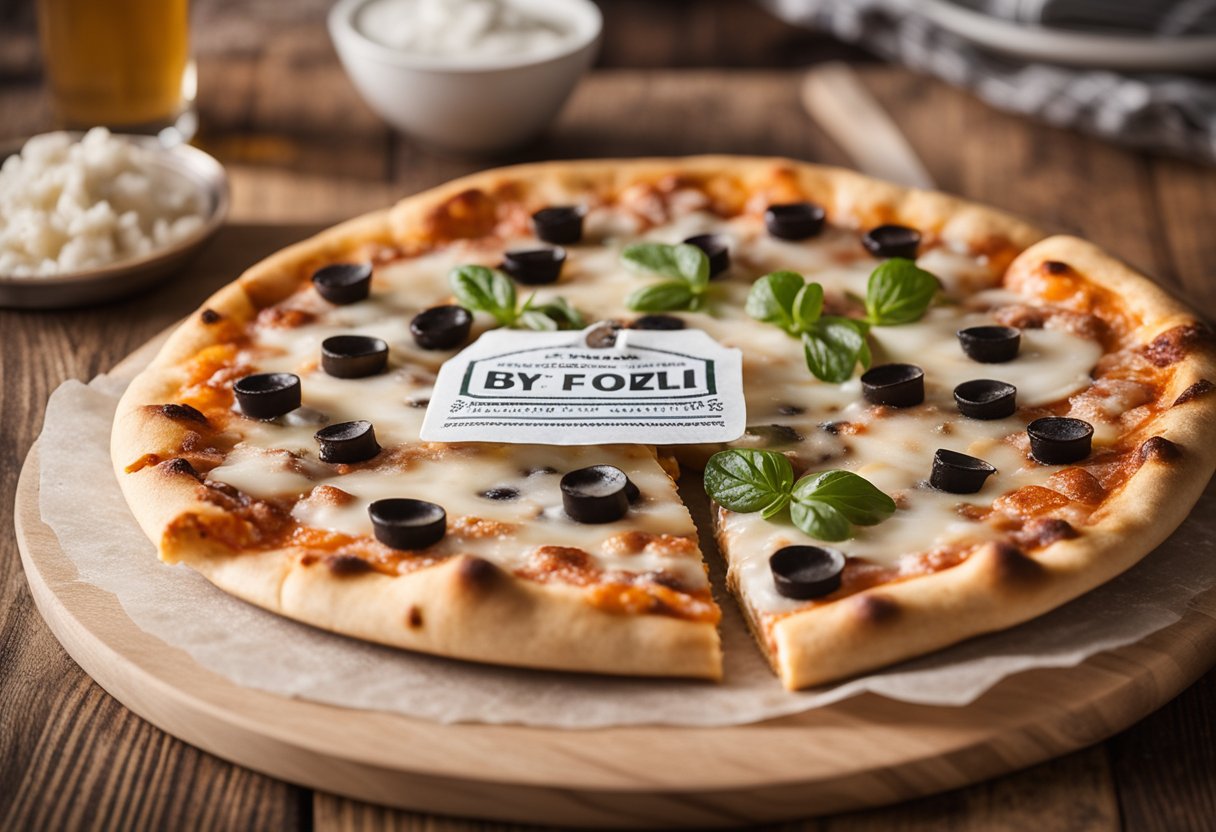
As someone who has had their fair share of frozen pizza, I can confidently say that it is not always easy to tell if a frozen pizza has gone bad just by looking at it.
However, there are a few key indicators that can help you determine whether or not your frozen pizza is safe to eat.
One of the most obvious signs that a frozen pizza has gone bad is discoloration. If you notice any discoloration on the pizza or on the packaging, it is best to err on the side of caution and throw it out.
Another sign that a frozen pizza has gone bad is the presence of dry spots. If the pizza looks dry or has any areas that appear to be dried out, it may no longer be safe to eat.
Mold is another sign that a frozen pizza has gone bad. If you notice any mold on the pizza or on the packaging, it is important to throw it out immediately.
Mold can be dangerous to consume and can cause a range of health problems.
In addition to visual cues, there are also a few other indicators that a frozen pizza has gone bad. For example, if the pizza has a slimy texture or emits a foul odor, it is best to throw it out.
These are signs that bacteria may have started to grow on the pizza, and consuming it could lead to food poisoning.
Finally, it is important to pay attention to the expiration date on the packaging. While frozen pizza can last for up to 18 months in the freezer, it is still important to consume it before the expiration date.
Eating a pizza that has expired can lead to a range of health problems and is not worth the risk.
In summary, when it comes to identifying whether or not a frozen pizza has gone bad, it is important to pay attention to visual cues such as discoloration and dry spots, as well as other indicators such as mold, slimy texture, foul odor, and expiration date.
When in doubt, it is always best to err on the side of caution and throw the pizza out.
Effects of Improper Storage
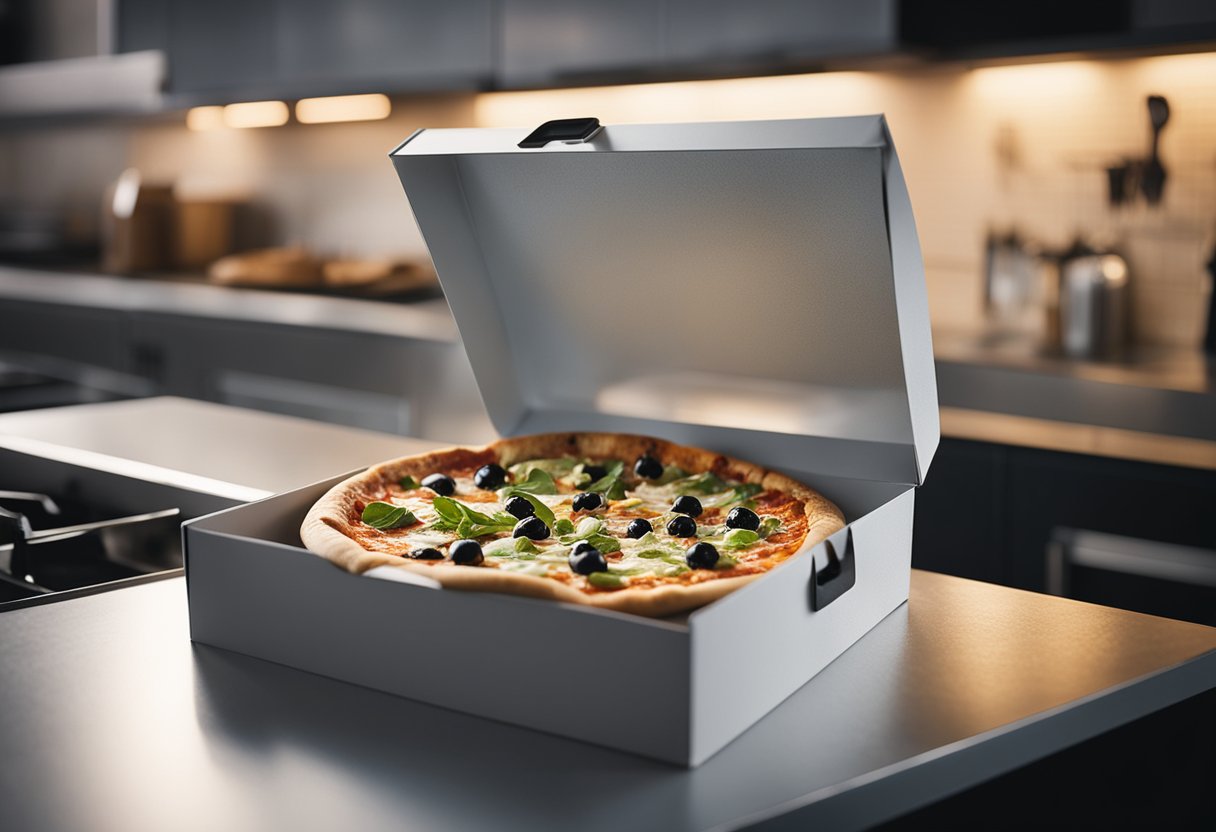
Improper storage of frozen pizza can lead to several negative effects on the quality and safety of the food. Here are some of the effects that can occur if frozen pizza is not stored correctly:
Freezer Burn
Freezer burn is a common issue that can occur when frozen food is exposed to air. This can happen when the packaging of the frozen pizza is not airtight or when the food is stored for too long.
Freezer burn can cause the pizza to become dry and tough, with a leathery texture. It can also cause the pizza to develop a strange taste or odor.
Texture
The texture of frozen pizza can be affected by improper storage. If the pizza is exposed to moisture, it can become soggy or mushy.
On the other hand, if the pizza is stored in a dry environment, it can become hard and brittle.
The texture of the pizza can also be affected by freezer burn, which can cause the crust to become tough and chewy.
Stale
Frozen pizza can become stale if it is not stored properly. Stale pizza can have a dry, cardboard-like texture and a stale taste.
This can happen if the pizza is not stored in an airtight container or if it is stored for too long.
Moisture
Moisture is another factor that can affect the quality of frozen pizza. If the pizza is exposed to moisture, it can become soggy and unappetizing.
This can happen if the pizza is not properly wrapped or if it is stored in a humid environment.
Compromised
If frozen pizza is not stored properly, it can become compromised in terms of safety and quality.
Bacteria can grow on the pizza if it is not stored at the correct temperature or if it is exposed to air or moisture. This can lead to foodborne illness if the pizza is consumed.
Peak Quality
Proper storage is essential for maintaining the peak quality of frozen pizza. If the pizza is stored correctly, it can maintain its flavor, texture, and overall quality for several months.
However, if the pizza is not stored properly, its quality can deteriorate quickly, leading to a less enjoyable eating experience.
In conclusion, it is important to store frozen pizza properly to maintain its quality and safety.
Freezer burn, texture changes, staleness, moisture, compromised safety, and reduced peak quality are all potential effects of improper storage.
Handling Leftover Pizza
As a pizza lover, I often find myself with leftovers after a night of indulging in my favorite food. Knowing how to properly handle leftover pizza is essential to ensure it stays fresh and safe to eat.
Firstly, it’s important to note that leftover pizza can be stored in the fridge for up to four days. However, it’s crucial to refrigerate it within two hours of being made or purchased to prevent bacterial growth.
To store leftover pizza in the fridge, place it in an airtight container or wrap it tightly with aluminum foil or plastic wrap. This will prevent it from drying out and absorbing unwanted odors from other foods in the fridge.
If you don’t plan on eating your leftover pizza within four days, freezing it is a great option. Frozen leftover pizza can last for months, but it’s important to properly store it to maintain its quality.
To freeze leftover pizza, wrap each slice tightly with plastic wrap or aluminum foil and place them in a freezer-safe container or bag. Label the container with the date to keep track of how long it’s been in the freezer.
When it comes time to eat your frozen leftover pizza, it’s important to thaw it properly.
Thawing pizza at room temperature can cause bacteria to grow, so it’s best to thaw it in the fridge overnight or in the microwave on the defrost setting.
Once thawed, you can reheat your leftover pizza in the oven, on the stove, or in the microwave.
However, it’s important to note that reheating pizza in the microwave can make it soggy, so using the oven or stove is recommended for a crispy crust.
In summary, handling leftover pizza involves proper storage and thawing techniques to ensure it stays fresh and safe to eat.
Whether you choose to store it in the fridge or freezer, following these tips will help you enjoy your leftover pizza for days to come.
Thawing and Cooking Frozen Pizza
When it comes to cooking frozen pizza, there are a few different methods you can use depending on your preferences and equipment.
The most common methods are using an oven or a microwave, but you can also cook it on a stovetop using a skillet.
Regardless of the method you choose, it is important to thaw the pizza first to ensure that it cooks evenly and thoroughly.
To thaw a frozen pizza, you have a few options. The easiest method is to simply leave it at room temperature for a few hours until it is completely thawed.
This method can take anywhere from 1-3 hours, depending on the size of the pizza and the temperature of your room.
Alternatively, you can thaw the pizza in the refrigerator overnight, which will take longer but is a safer method as it reduces the risk of bacteria growth.
Once the pizza is thawed, you can cook it using your preferred method. If you are using an oven, preheat it to the temperature specified on the pizza’s packaging.
Place the pizza directly on the oven rack or on a baking sheet, and cook it for the recommended time, usually between 10-15 minutes.
For a crispy crust, you can brush the pizza with olive oil before cooking.
If you are using a microwave, place the thawed pizza on a microwave-safe plate and cook it according to the instructions on the packaging.
This method is typically faster than using an oven, but the crust may not be as crispy.
Finally, if you want to cook the pizza on a stovetop, heat a skillet over medium-high heat and add a small amount of olive oil.
Place the thawed pizza in the skillet and cook it for a few minutes on each side until the crust is crispy and the cheese is melted.
No matter which method you choose, make sure to follow the instructions on the packaging and use a cooking thermometer to ensure that the pizza reaches a safe internal temperature of 165°F.
Food Safety Considerations
As a food product, frozen pizza has an expiration date, and it is important to follow food safety guidelines to ensure that it is safe to eat.
Bacteria can grow on frozen pizza, and it is important to be aware of the danger zone temperature range where bacteria can multiply rapidly.
According to the USDA, freezing food at 0°F inactivates any bacteria, yeasts, and molds present in the food.
However, once the pizza is thawed, these microbes can become active again, multiplying under the right conditions to levels that can lead to foodborne illness.
Therefore, it is important to handle frozen pizza safely and to cook it properly to kill any bacteria that may have grown on it.
It is important to follow the food safety guidelines provided by the FDA and USDA to ensure that frozen pizza is safe to eat.
The FDA recommends that perishable foods, including frozen pizza, should not be left at room temperature for more than two hours.
If frozen pizza has been left out of the freezer for more than two hours, it should be discarded.
Additionally, it is not recommended to refreeze frozen pizza once it has been thawed. Refreezing can cause bacterial growth and can increase the risk of food poisoning.
In summary, it is important to handle frozen pizza safely, store it properly, and cook it thoroughly to prevent bacterial growth and food poisoning.
Following food safety guidelines can help ensure that frozen pizza is safe to eat.
Fresh Vs. Frozen Pizza
As a pizza lover, I have always been curious about the differences between fresh and frozen pizza.
Fresh pizzas are made with fresh ingredients, and they are typically cooked in a traditional brick oven.
On the other hand, frozen pizzas are pre-made and stored in the freezer until they are ready to be cooked. Here are some key differences between fresh and frozen pizza:
Taste
Fresh pizzas have a distinct taste that comes from the fresh ingredients used to make them. The crust is crispy, and the toppings are flavorful.
Frozen pizzas, on the other hand, can have a slightly different taste. The crust may not be as crispy, and the toppings may not be as fresh-tasting as those on a fresh pizza.
Convenience
Fresh pizzas are typically made to order, which means you may have to wait for them to be prepared. Frozen pizzas, on the other hand, can be cooked quickly and easily.
All you need to do is pop them in the oven, and they are ready to eat in a matter of minutes.
Shelf Life
Fresh pizzas have a limited shelf life, and they need to be eaten within a few days of being made. Frozen pizzas, on the other hand, can be stored in the freezer for months.
According to OvenSpot, frozen pizzas can last up to 18 months in the freezer if stored properly.
Cost
Fresh pizzas can be more expensive than frozen pizzas, especially if you are ordering them from a restaurant. Frozen pizzas, on the other hand, are often less expensive and can be bought in bulk.
Health
Fresh pizzas can be healthier than frozen pizzas, depending on the ingredients used. Frozen pizzas often contain preservatives and other additives to help them last longer in the freezer.
However, homemade fresh pizzas can be made with healthier ingredients, such as whole wheat crust and fresh vegetables.
In conclusion, both fresh and frozen pizzas have their pros and cons. Fresh pizzas have a unique taste and are made with fresh ingredients, but they can be more expensive and have a shorter shelf life.
Frozen pizzas are convenient, cost-effective, and have a longer shelf life, but they may not taste as fresh and can contain preservatives.
Ultimately, it comes down to personal preference and what you are looking for in a pizza.
Related posts:
Frequently Asked Questions
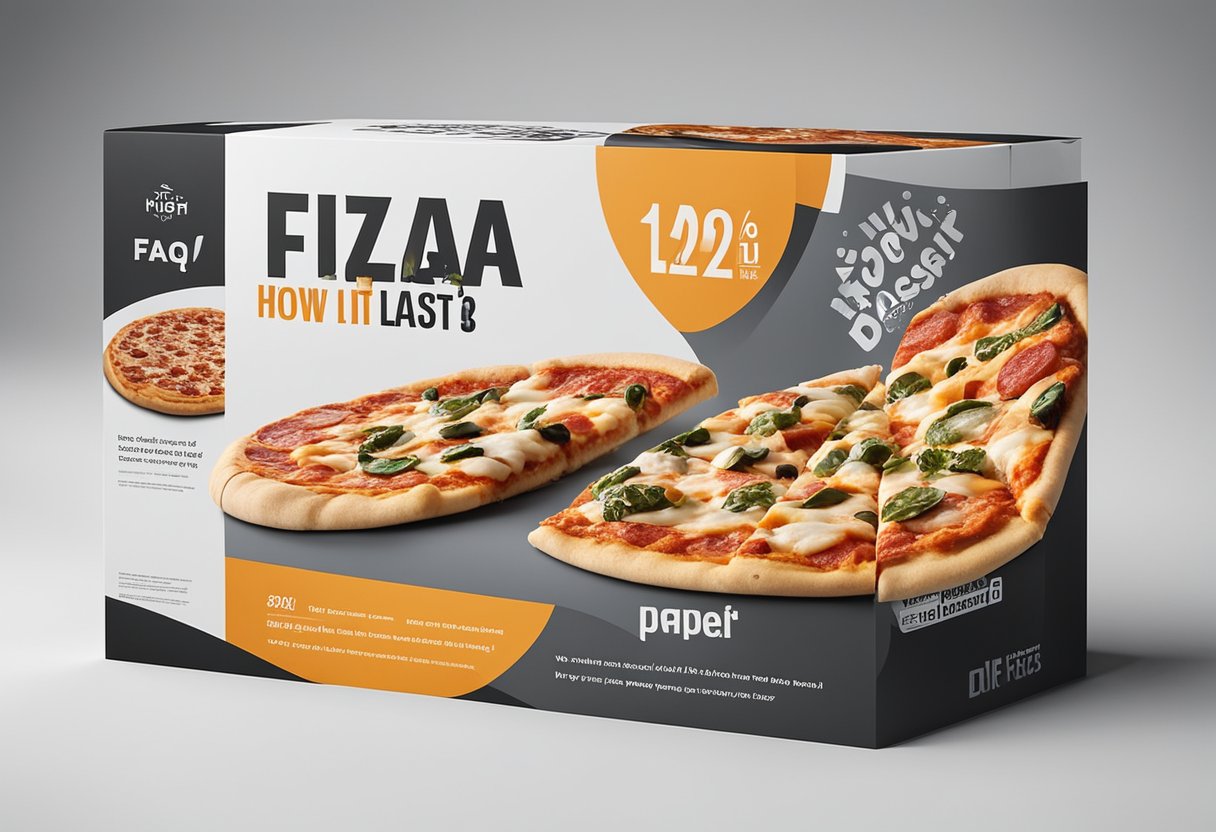
How long does frozen pizza last in the freezer?
Frozen pizza can last for 5 to 18 months in the freezer, depending on the brand and storage conditions.
According to Cuisine Seeker, frozen pizzas can last for 5 to 12 months in the freezer, while OvenSpot suggests that properly stored frozen pizza can last for up to 18 months in the freezer.
It is important to note that the longer a pizza is frozen, the more its quality will change. Proper storage is crucial to maintain the best quality of the pizza.
Can uncooked frozen pizza be stored in the fridge?
Uncooked frozen pizza should not be stored in the fridge. According to Prepared Cooks, storing uncooked frozen pizza in the fridge can cause the dough to become soggy and the toppings to spoil.
It is recommended to store uncooked frozen pizza in the freezer until ready to bake.
How can you tell if frozen pizza has gone bad?
You can tell if frozen pizza has gone bad by checking for signs of freezer burn, such as discoloration, dryness, and ice crystals.
According to StillTasty, if the pizza has been stored properly and does not show signs of freezer burn, it is usually safe to eat even if it has gone past its expiration or best by date.
However, if the pizza shows signs of spoilage, such as a sour smell or mold, it should be discarded.
How long can cooked pizza last outside of the fridge?
Cooked pizza should not be left outside of the fridge for more than two hours. According to the USDA, perishable food, including pizza, should be refrigerated within two hours of being cooked or removed from the fridge.
If the pizza has been left outside of the fridge for more than two hours, it should be discarded to avoid the risk of foodborne illness.
Can cooked pizza be frozen and reheated?
Cooked pizza can be frozen and reheated. According to StillTasty, cooked pizza can be frozen for up to two months.
To reheat frozen pizza, it is recommended to preheat the oven to 375°F, place the pizza on a baking sheet, and bake for 10-15 minutes or until heated through.
Is it safe to eat frozen pizza past its expiration date?
According to Prepared Cooks, frozen pizza can still be safe to eat past its expiration or best by date if it has been stored properly and does not show signs of spoilage.
However, the quality of the pizza may decrease over time. It is important to use your best judgment and check for signs of freezer burn or spoilage before consuming frozen pizza that has gone past its expiration date.






